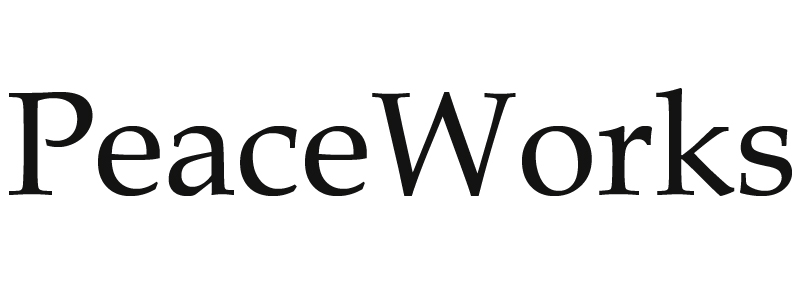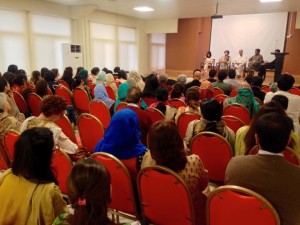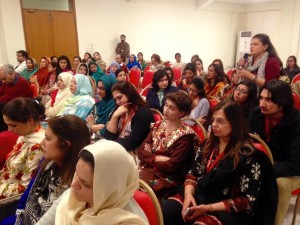Headstart School recently launched History for Peace — a project under the PeaceWorks (an initiative of The Seagull Foundation for the Arts,) umbrella—in Pakistan. Teachers, historians, students, and authors gathered at the event to discuss the prevailing issue of teaching a distorted version of history to students within the subcontinent, especially in Pakistan. Four panelists, Anam Zakaria, Salma Malik, Asim Sajjad Akhtar, and Safeer Ullah along with the moderator Jahandad Khan, shared their views on how the state plays a significant role in dictating historical narratives.
The discussion started with Jahandad posing a question to the panelists—when it comes to teaching history, where do you draw the line? Salma Malik opened the account with her views that nothing can and should be colour coded. She pointed out that since Zia Ul Haq’s era, curriculum development hasn’t made much progression and, in fact, has stagnated students’ ability to ask critical questions pertaining to history and culture. Anam added by saying we cannot create history – doing so will only create vacuums. By omitting certain parts of our history, students are forced to perceive Hindus and Sikhs in a certain light, often reduced to figments of our own imagination, influenced by biased historical and media coverage. While addressing the same question, Asim Sajjad took a more hardline approach on the state’s narrative and made it clear to the participants that when it comes to teaching history, the state does not draw a line. The State has an official narrative, often resorting to alienating itself as an instigator of violence. According to Asim, Pakistan’s right wing factions don’t necessarily influence the historical narrative, this is evident by the Islamization under Zia’s regime – much of which has remained unchanged since the 70s. Only presenting the reader with the facts will challenge the current narrative. Unfortunately, in Pakistan’s case, students aren’t presented with the facts as they ought to be, especially regarding the 1971 creation of Bangladesh and the atrocities committed by the Pakistani army. This was also reiterated by one of the participants, Tariq Aqil, who was living in Dhaka at the time of the 1971 partition.
Moving on, the panel proceeded to discuss fragments within Pakistani history textbooks that present a rather myopic picture of the other whether on religious or cultural lines. Punjab has exalted its influence in shaping much of the federal narrative in Pakistan. Asim points out the irony by discussing how despite being the biggest economic beneficiaries, Punjabis often ask people of other ethnicities, ‘why can’t we all be Pakistanis, instead of Sindhi, Pashtun, or Baloch?’ When discussing their own cultural idiosyncrasies, Punjabis tend to overlook the fusion of Sikh and Mughal heritage within Punjab, while also demoting their own language, often connotated with being ‘low-class.’ It is no surprise, according to Safeer and Asim, that such omissions have created vacuums within the historical discourse and have suppressed the mental capacity of Pakistani students in regards to reading and researching history. Despite veiling ‘Pakistan Studies’ behind the façade of ‘history,’ the bulk of Pakistan’s youth is still unable to identify certain aspects of the Pakistani political structure, such as, knowing what constituency they belong to.
Comparing the Pakistani textbook narrative to that of India, the panelists shared their views regarding what can be done and what has been happening as a result of this distorted narrative. For instance, Anam shared her story of a recent exchange program with India. Pakistani students believed they had sinned after seeing a picture of a Hindu girl, whereas, Indian students were baffled to see Anam in jeans as compared to a Burqa – both instances affirming that much of the discussion in our history textbooks conveniently overlooks the ‘other,’ thus, making us less receptive. Even though there have been repeated attempts by the religious right to hijack the narrative in India, Pakistan can still learn from the recent changes made to India’s curriculum, especially the role played by activists in revising the text. The panelists deem it is high time that we start discussing Partition and its nuances, the violence instigated on both sides, and the repercussions of the violence till date.
Salma Malik and Asim Sajjad also shared their views on students and how they perceive history taught in Pakistani textbooks, at the Masters level. Both reaffirmed that today’s students’ critical faculty is rather dull, mainly caused by the inability of the Pakistani curriculum to foster progressive thinking and critical analysis. Students have questions, but are often not articulate enough to pose them. Rather than reading and researching history topics, many simply resort to being inundated by media—believing whatever they have been told. Since the state actively works to ‘dumb down’ the student, according to Asim, every time there is a call for a change in the curriculum, one is repeatedly accused of being an agent of the Aga Khan community. After reinforcing the same narrative for over 70 years, the state is closing down on spaces where one can ask for a change to the curriculum. Even on social media, limits are imposed on progressive thinkers, evident by a current discussion on banning Facebook in the country.
In fusing art and cinema with teaching, Safeer and Salma discussed their recent work pertaining to history. Salma recently conducted a research project on ‘common themes’ between India and Pakistan—one showcased through cinema. She discussed how, in most movies dating back to the 1960s and 1970s, Partition was an act that ‘just’ happened. Similarly, the partition of Punjab is focused on while the split of Bengal is mostly neglected. Further, since the Partition, there have been thirteen movies that showcase the 1947 Partition, but none have covered the 1971 split of Pakistan—a topic still very much taboo within Pakistan. Salma went on to point out the stereotypes depicted in cinema on both sides of the border. Pakistani movies shows a Hindu often covered in orange, sitting under a banyan tree, whereas, Indians often show Pakistanis as bearded men, clad in Shirwanis.
Towards the end of the evening, panelists discussed ways in which we can encourage open discussion within the classroom. With some recent efforts from the Partition Archive and The Theatre Wallay Group (Dagh Dagh Ujala), people have become more exposed to varying narratives pertaining to Partition. As teachers, participants were encouraged to start having open discussions with their students in the classroom, whether that pertains to discussing shared histories through art, architecture, language, or films. Students come into the classroom with a very skewed and insular perspective of history, and one way to deconstruct that narrative is through dialogue and exchange of ideas. In today’s interconnected world, it’s relatively easy to conduct virtual exchange sessions with students in India and Bangladesh, something that Anam Zakaria and Sameer Shafi actively do in their classrooms. Finally, the participants were given a brief demonstration of the History for Peace website, a resource that educators, across South Asia, can use within their classroom.
– Sameer Shafi Warraich
Faculty, Headstart School



